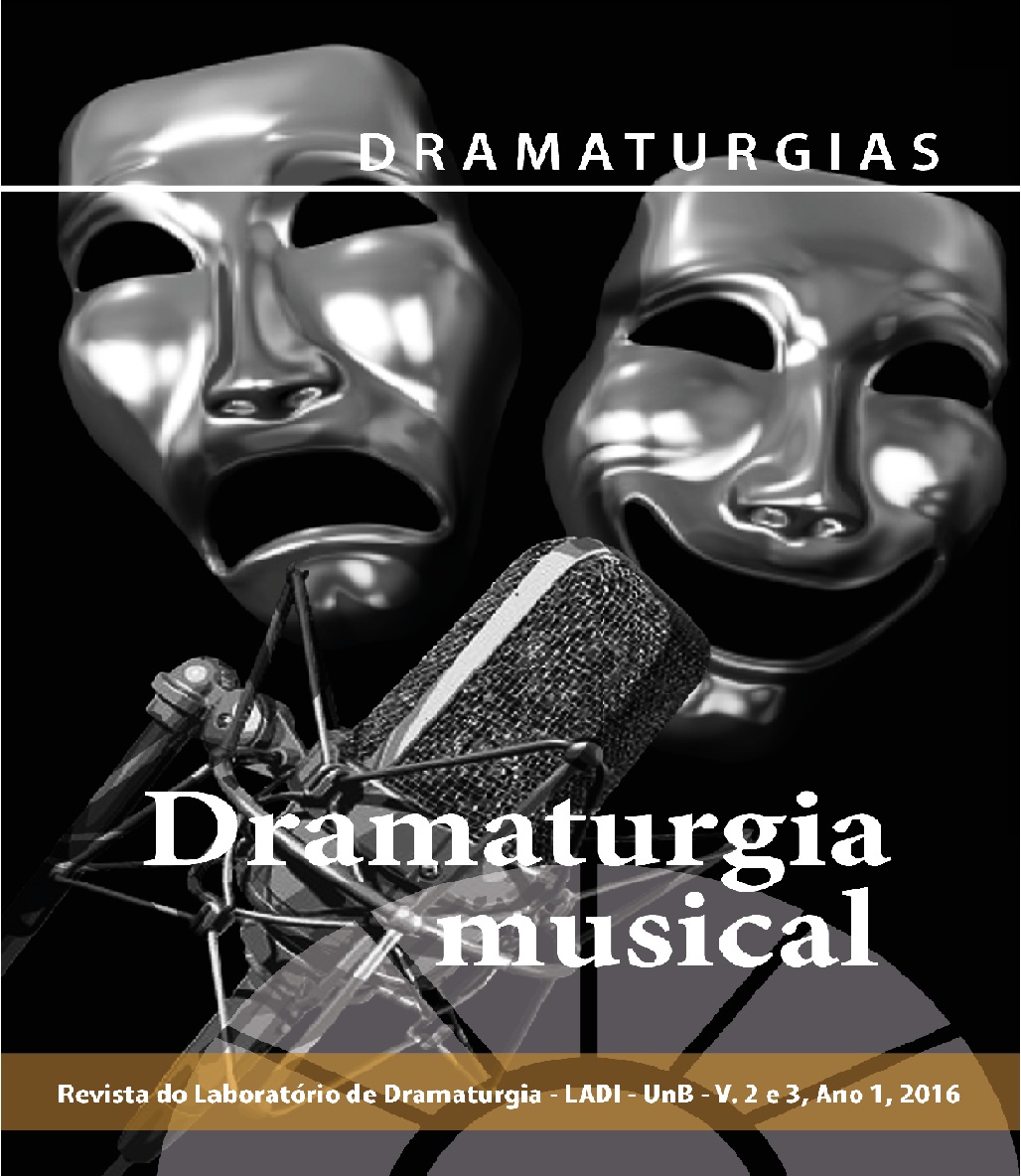Ópera coreográfica: experiência e possibilidades para dramaturgias do corpo
DOI:
https://doi.org/10.26512/dramaturgias.v1i2-3.8664Keywords:
Ópera; ópera coreográfica; corpo; dança; canto lírico.Abstract
This paper discusses the idea of choreographic opera as an artistic practice present in the scope of the body dramaturgy and, for that, we set the reflections raised by the choreographies of operas performed by some coreographers. Later, we bring the positions of the historian and critic David Levin and some positions from Meyerhold about staging opera. As mediators of these reflections we bring our experience in the conception and performance of our version choreographic for Prometheus (Gabriel Fauré), staged and presented in São Paulo by an opera-lab company.
Downloads
References
ARMITAGE, M. Martha Graham: the early years. Los Angeles: Da Cappo Paperback, 1978.
BOCCANEGRA, S. A tremendous Tannhäuser led the way in Daniel Barenboim’s whirlwind Staatsoper Festival in Berlim. The Guardian (Classical Music: the observer). Disponível em: http://www.theguardian.com/music/2014/apr/20/tannhauser--berlin-staatsoper-barenboim-review-simon-boccanegra-domingo (Acessado em27/03/2016).
CARNEGY, P. Wagner and the Art of the Theatre. Yale: Yale University Press, 2006.
DUDEQUE, N. O Drama Wagneriano e o papel de Adolphe Appia em suas transforma- ções cênicas. Revista Científica /FAP, p.1-16, Curitiba, v.4, n.1, 2009.
HOROSKO, M. Martha Graham: the evolution of her dance, theory and training. Gainesville: University Press of Florida, 2002.
LEVIN,D.(Edit.) Opera throught other eyes. Stanford: Stanford University Press, 1994.
LEVIN,D. Choreographer’s Opera? Bodies, Voices, and Meaning in Pina Bausch’s Production of Gluck’s ‘Orpheus and Eurydice’. Vídeo disponível em http://www.vimeoinfo.com/video/45141609/david-levin-choreographers-opera-bodies-voice (Acessado em 02/04/2026).
MORRIS,C. Figaro Dances, Opera Dances: Response to Rebecca Schneider. The OperaQuarterly. pp. 170”“175, Vol. 31, No. 3, 2014.
PHILLIPS, E. R Gabriel Fauré: a guide to research (2nded.). London: Routledge, 2011.
PICON-VALLIN, B. Meyerhold. São Paulo: Perspectiva, 2013.
ROBINSON, H. Love for Three Operas: The Collaboration of Vsevolod Meyerhold and Sergei Prokofiev. The Russian Review. pp. 287-304, Vol. 45, No. 3, 1986.
SCHNEIDER, R. Gesture to Opera: Yinka Shonibare’s Un ballo in maschera. The Opera Quarterly. pp. 155”“169, Vol. 31, No. 3, 2015.
SCHWARTZ, A. Medium Specificity: Response to Rebecca Schneider. The Opera Quarterly. Vol. 31, No. 3, pp.176”“18, 2014.
WAGNER,R. Opera and Drama (translated by W.Ashton Ellis). Nebraska: University of Nebraska Press, 1995.
WALTZ,S. Entwicklung der Choreographischen Oper (The Development of the Choreographic Opera). Disponível em http://www.sashawaltz.de/wp-content/uploads/Choreographische_Oper.pdf (Acessado em 27/03/2016).
YAARI,N. Myth into Dance: Martha Graham’s Interpretation of the Classical Tradition. International Journal of the Classical Tradition, pp. 221-242, Vol. 10, No. 2, 2003.
Downloads
Published
How to Cite
Issue
Section
License
Autores mantém os direitos autorais e concedem à revista o direito de primeira publicação, com o trabalho simultaneamente licenciado sob a Licença Creative Commons Attribution que permite o compartilhamento do trabalho com reconhecimento da autoria e publicação inicial nesta revista.


